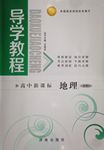题目内容
Because osteoporosis (骨质疏松) often causes no symptoms at all until a fall breaks a bone, the only way to tell if you have it is through a bone mineral thickness test.This is advised for anyone over 50 who has suffered a broken bone and all women over 65.Right now, the test involves lying on your back while the arm of a special X-ray device moves over your body to measure the thickness of various bones.
CyberLogic, a New York R&D firm, has developed a simpler device that’s nine inches high, runs on four AA batteries and scans bones with ultrasound. If the portable machine proves as reliable as X-rays, it could be a breakthrough, says New York osteoporosis expert Dr. Ethel Siris.“A small device like this could make bone checkups part of a routine office visit, because it’s both affordable and user-friendly.” If testing shows that you have osteoporosis, some major advances in treatment can help.While there are several effective medications on the market, including Fosamax, Actonel, Evista, Miacalcin and Forteo, the latest wonder drug is Boniva, the first once-a-month pill for osteoporosis.The FDA recently approved this drug, which works by reducing activity in cells responsible for bone breakdown.
Should osteoporosis get severe enough to break a vertebra, doctors have a new way to make repairs: Two tiny balloons are inserted into the bone through surgical tubes.The balloons are expanded to push the bone back into its normal position, then bone cement is used to keep it from breaking again.
1.What does the underlined word “This” in paragraph 1 refer to?
A.Osteoporosis often causes no sign.
B.The only way to tell if you have osteoporosis.
C.A bone mineral thickness test.
D.A fall snaps a bone.
2.What can we infer from the passage?
A.Women are easier to get osteoporosis.
B.Men are easier to get osteoporosis.
C.Anyone over 50 is easy to get osteoporosis.
D.Man and women share equal chances to get osteoporosis.
3.Which of the following is true about the portable scanner?
A.It’s easy to carry along. B.It’s as reliable as X-rays.
C.It’s a breakthrough. D.It’s not yet put into experiment.
4.Which of the four medications is the most convenient?
A.Fosamax. B.Evista. C.Forteo. D.Boniva.
CAAD

 导学教程高中新课标系列答案
导学教程高中新课标系列答案根据短文内容,从短文后的选项中选出能填入空白处的最佳选项。选项中有两项为多余选项。
Handwriting can make or break the first impression . If your handwriting is difficult for others to read, you will sometimes feel embarrassed._ 1___. It needs lot of practice to improve your handwriting.
___2___. Try each of them out on a piece of paper by signing your name .Find out which type of pen you can write best with. You may be amazed at the change in your handwriting just by changing to another pen.
___3_ _. Do not just do what feels comfortable because that is just your old bad habit coming back into play. Try to hold the pen lightly and don’t press too hard.
Use your chosen pen to write Os on some pieces of lined paper .Write until you have filled up all the lines. Be careful with each O that you write. _4___.
Practice writing Os as much as possible . Remember , practice makes perfect .You may practice for weeks or months if you need to._ _5___.
As your handwriting shows signs of improvement , go ahead and keep on practicing by writing more words.
| A.Gather different types of pens |
| B.Practice holding your pen in different ways. |
| C.However ,a bad writing habit is hard to break. |
| D.Choose a type of pen with which you write best. |
F. Two to three months’ practice is enough to get good handwriting.
G. After you are confident in your Os, do the same thing with your name.
Handwriting can make or break the first impression . If your handwriting is difficult for others to read, you will sometimes feel embarrassed._1___. It needs lot of practice to improve your handwriting.
___2___. Try each of them out on a piece of paper by signing your name .Find out which type of pen you can write best with. You may be amazed at the change in your handwriting just by changing to another pen.
__3__. Do not just do what feels comfortable because that is just your old bad habit coming back into play. Try to hold the pen lightly and don’t press too hard.
Use your chosen pen to write Os on some pieces of lined paper .Write until you have filled up all the lines. Be careful with each O that you write.__4____.
Practice writing Os as much as possible . Remember , practice makes perfect .You may practice for weeks or months if you need to.__5___.
As your handwriting shows signs of improvement , go ahead and keep on practicing by writing more words.
| A.Gather different types of pens |
| B.Practice holding your pen in different ways. |
| C.However ,a bad writing habit is hard to break. |
| D.Choose a type of pen with which you write best. |
F. Two to three months’ practice is enough to get good handwriting.
G. After you are confident in your Os, do the same thing with your name